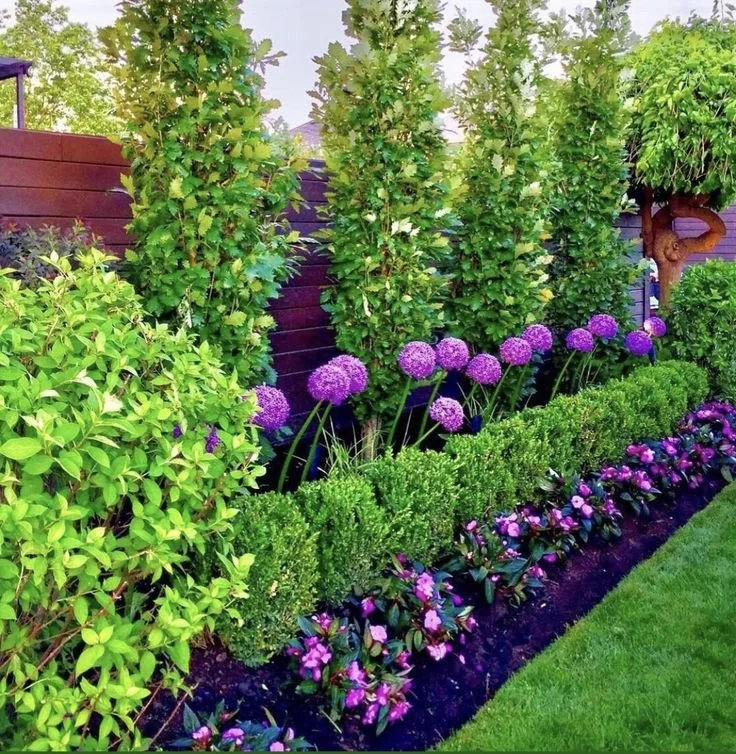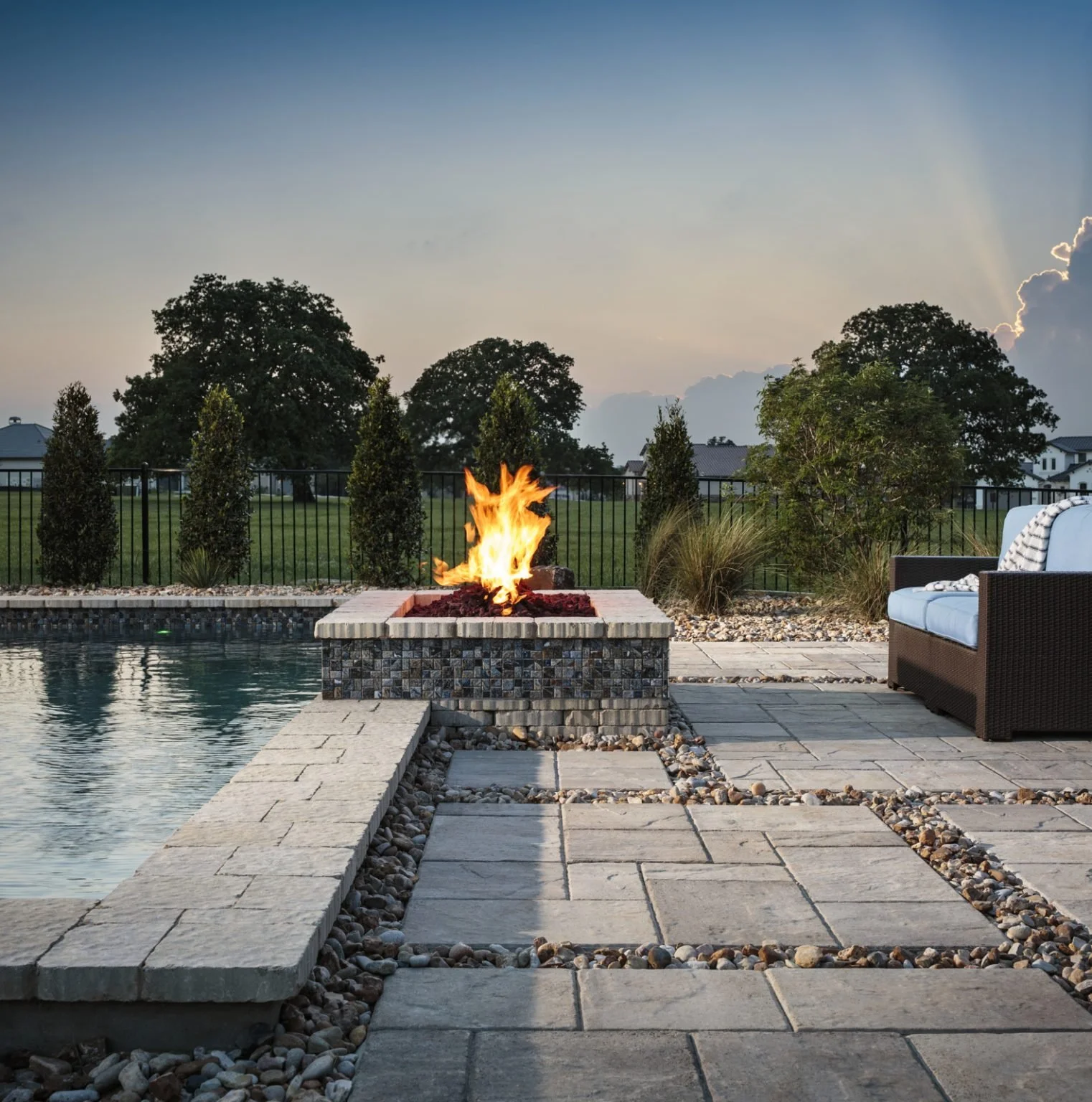Transform Your Outdoors: A Guide to Stunning Landscape Design In Fresno, Ca
Landscape Design with Concrete Pathway installation
Your outdoor space is an extension of your home, and the right landscape design can elevate the look and feel of your property. Whether you’re working with a small yard or sprawling acreage, landscaping provides endless opportunities for creativity. From lush gardens to functional hardscapes, well-planned landscapes offer beauty, sustainability, and practicality.
In this blog post, we’ll explore key landscape design principles, ideas, and how to bring them to life in your own space. Plus, I’ll describe the types of images that best complement each section to give you the full visual experience.
1. Start with a Plan: Designing with Purpose
A beautiful landscape starts with a thoughtful plan. It's essential to take the time to analyze your space and determine what works best for your lifestyle and your property's needs.
Key Steps to Start Planning Your Landscape:
Assess Your Space: Take stock of your yard’s size, shape, and existing features. Note where there’s sun and shade, where wind patterns may affect plant growth, and where drainage might be an issue.
Define Functionality: What do you want from your landscape? Do you need areas for entertaining, a garden, a place for children to play, or maybe a quiet retreat? The function will guide your design decisions.
Set a Budget: Landscaping can be as simple or as extravagant as you like, but it’s important to set a budget to avoid overspending.
Landscape design plan
2. Create a Focal Point: Draw the Eye
Every landscape needs a focal point to draw attention and give the design structure. Focal points can be both natural and manmade, depending on your style.
Popular Focal Point Ideas:
Water Features: A koi pond, fountain, or waterfall adds visual interest and creates a peaceful atmosphere.
Statues or Sculptures: A decorative statue or sculpture can create a striking visual centerpiece, whether it’s a modern piece or a classical bust.
Trees: Large, mature trees, such as a majestic oak or a flowering tree like a cherry blossom, naturally draw the eye.
Outdoor Art: Large pots, garden sculptures, or even hanging lanterns can serve as functional focal points in your landscape.
Water fountain in landscape design
3. Incorporate Layers: The Art of Depth
Layering is a key landscaping technique that adds dimension and depth to a yard. By grouping plants of varying heights, textures, and colors, you can create a visually dynamic and harmonious outdoor space.
Layering Tips:
Low to High: Plant smaller, low-growing plants at the front and taller plants like shrubs and trees in the back.
Textural Contrast: Combine different textures—soft grasses, spiky shrubs, and smooth stones—to create visual contrast.
Color Coordination: Think about color contrast or a cohesive color palette. Use a mix of vibrant flowers and subtle foliage tones to create a sense of balance.
Layered Landscaping
4. Integrate Hardscaping: Function and Structure
While soft elements like plants are essential to landscape design, hardscaping adds functionality and structure. Hardscapes are non-living features such as patios, walkways, retaining walls, and outdoor kitchens.
Popular Hardscaping Features:
Patios and Decks: A spacious stone or wood patio for outdoor dining, lounging, or entertaining.
Walkways: Stone or gravel paths connecting different areas of the yard, like from the driveway to the garden or from the house to the pool.
Retaining Walls: Used to level out sloped areas or create multi-level garden beds, retaining walls add both practicality and design appeal.
Fire Pits: A built-in fire pit or outdoor fireplace makes your backyard usable in cooler months, while adding ambiance to your space.
5. Plant with Purpose: Low-Maintenance and Sustainable Landscaping
A beautiful landscape doesn’t have to be high-maintenance. Choose plants that are suited to your climate and are low-water, drought-resistant, or native to your area. Sustainability is key to modern landscape design, and it’s possible to have a gorgeous garden that’s eco-friendly.
Tips for Sustainable Planting:
Native Plants: Native plants are adapted to the local environment and generally require less water and care.
Xeriscaping: If you live in an arid or drought-prone area, consider xeriscaping, which uses drought-tolerant plants to create an attractive yet water-efficient landscape.
Edible Gardens: Incorporating fruit trees, vegetable gardens, and herb beds not only adds beauty but also provides fresh, homegrown produce.
6. Lighting: Extend the Magic of Your Landscape
Outdoor lighting doesn’t just add ambiance—it enhances the safety and accessibility of your outdoor space. Consider where lighting can enhance your landscape’s features, whether it’s highlighting a water feature or creating a romantic glow on your patio.
Lighting Ideas:
Pathway Lights: Small LED lights along walkways to guide guests safely through the garden at night.
Accent Lighting: Use spotlights or downlights to highlight a special tree, sculpture, or fountain.
String Lights: Hang string lights in trees or around your patio for a magical, cozy feel.
Deck Lighting: Install subtle lighting along the edge of a deck or patio to illuminate the space without overwhelming it.
7. Seasonal Interest: A Landscape for Every Season
To keep your landscape interesting year-round, include plants that provide visual interest in every season. Choose trees, shrubs, and flowers that bloom or display foliage at different times of the year to keep the space vibrant.
Seasonal Ideas:
Spring and Summer: Flowering perennials, like lavender, peonies, and hydrangeas, bring color in the warmer months.
Fall: Evergreen trees, ornamental grasses, and shrubs like holly or winterberry offer year-round color and texture.
Winter: Deciduous trees may shed their leaves, but evergreens, berries, and architectural plants like ornamental grasses maintain interest.
8. Finishing Touches: Personalizing Your Outdoor Space
Once the core elements of your landscape are in place, it’s time to add personal touches. This could include garden furniture, decorative pieces, or a signature style that reflects your personality.
Ideas for Personalization:
Outdoor Furniture: Comfortable seating areas, such as a hammock, lounge chairs, or a dining table for outdoor meals.
Decorative Accents: Lanterns, sculptures, or garden gnomes can give your garden a whimsical touch.
Outdoor Rugs and Pillows: Add texture and color to your patio with cozy outdoor rugs and throw pillows.
Conclusion: Bringing Your Dream Landscape to Life
Designing a landscape can be an exciting and rewarding project. By following key design principles and adding personal touches, you can create a space that reflects your style, fits your needs, and enhances the beauty of your home. Whether you’re starting from scratch or updating your current landscape, the possibilities are endless. By combining thoughtful planning, design techniques, and a little creativity, you’ll have a landscape that’s not only functional but a true reflection









